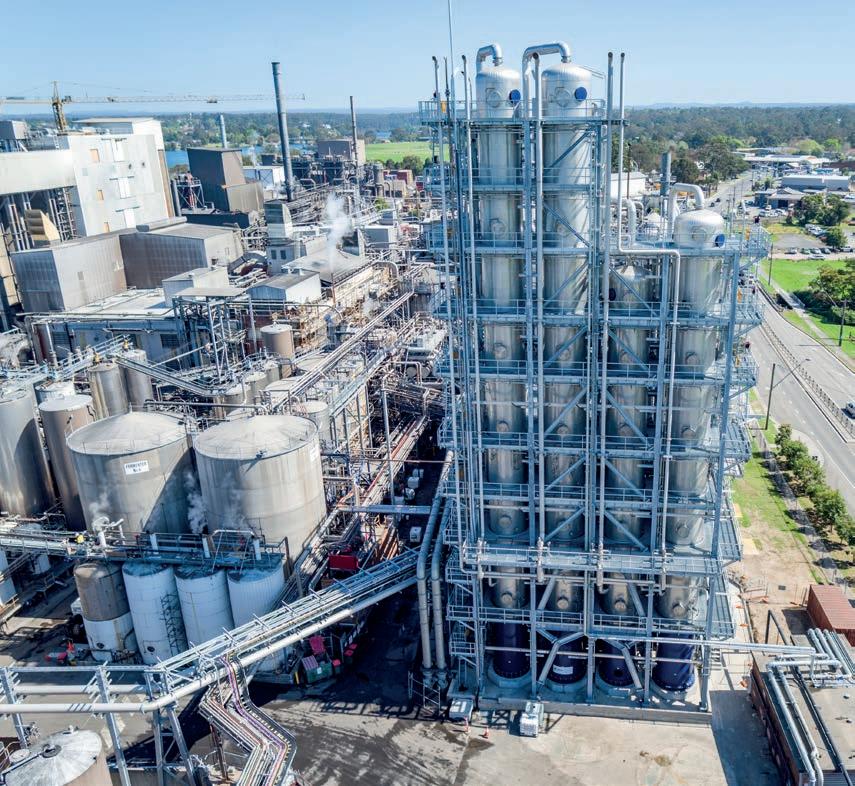Technology
ARTIFICIAL INTELLIGENCE
AI and the energy transition A rtificial intelligence (AI) is playing a significant role in the energy transition. As digitalisation facilitates development of new energy systems, AI is being deployed to optimise energy efficiency and decarbonisation across supply and value chains. Sensor-based technology via the Internet of Things (IoT) generates vast data sets that can be processed in real-time on the cloud, using AI to observe, interrogate and analyse operational performance. Furthermore, augmented and virtual reality (VR) offers visualisation of these data sets to create digital twins of physical assets. Shell has been aggregating processed data sets into cloudbased data stores for decades to optimise processes, while AI has gained momentum more recently. There have been three milestones in terms of data processing in the energy sector, explains Dan Jeavons, General Manager for Data Science. ‘First, Shell led the industry in scenario planning from the 1970s, with detailed statistical analysis. 2013 was a turning point, when Shell introduced advanced predictive analytics – recognising the importance of embedding artificial intelligence, which could be deployed in the field to support business operations.’ In 2017, Shell announced an overall digital strategy, led by Shell’s executive committee, that resulted in the establishment of a Digital Centre of Excellence which included AI. ‘This marked a big difference in terms of handling the volume of data available and the ability to embed models in the software,’ Jeavons remarks. So, what is AI and machine learning? Jeavons suggests that, in the broadest sense, AI is the ability of the computer to simulate human cognitive functions and activity. The key technology in this respect, whether natural language processing, robotic process automation or drones, rely heavily on machine learning. Other technologies are used in conjunction, like edge processing, IoT and advanced visualisation. AI is often a collection of different 18 Petroleum Review | December 2021
Artificial intelligence is spurring innovation and optimisation throughout Shell’s upstream, midstream and downstream operations, writes Brian Davis. technologies, but machine learning is at the core.
Engineers assessing rock properties such as porosity and permeability using AI and virtual reality Photo: Shell
AI in practice The energy business is a very physical business, running plants, offshore platforms, pipelines or refineries, through to fuel retail service stations. ‘Everything carries elements of risk that are observed using traditional methods of computation and rely on observation by humans, which can be error-prone,’ says Jeavons. Indeed, inspection of a large facility from end-to-end can take years. Whereas AI can accelerate the process. Jeavons does not claim that a machine can do it better than a human. But he notes that utilising a multitude of machines, drones and robots equipped with cameras provides far more pictures of an installation and basic filtering, ‘so the human inspector can focus on higher value add in terms of risk analysis’. Shell has developed a machine vision system so drone photos can be passed through a neural
network to detect anomalies, automatically flagging up areas of corrosion, using deep learning capability for further investigation by inspectors and reliability teams. For this reason, Jeavons prefers to talk about ‘augmented intelligence’ rather than artificial intelligence. ‘People often think of AI as a replacement for human cognitive function, but I don’t see it that way. AI is very good at scaledup, advanced data processing – applying human-like screening capabilities to narrow down the search space in support of human decision-making.’ Basically, he sees augmented intelligence supporting human intelligence to make better decisions. For example, 3D seismic processing is critical for subsurface exploration and involves vast amounts of data. Machine learning is being used to ‘de-noise’ seismic data, using deep learning and feature recognition to speed up seismic processing by 25%. Predictive maintenance Over the last few years, Shell has been working with C3.AI to scale AI-based predictive maintenance solutions to reduce costs and improve the productivity, reliability and performance of assets. Shell is monitoring over 8,700 pieces of equipment using machine learning across upstream and downstream operations, as







